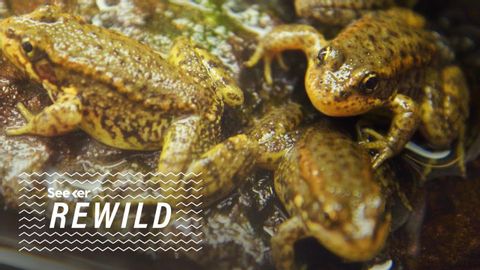
Subtitles & vocabulary
This Frog-Killing Fungus Could Wipe Out Entire Species
00
林宜悉 posted on 2020/11/17Save
Video vocabulary
recognize
US /ˈrek.əɡ.naɪz/
・
UK /ˈrek.əɡ.naɪz/
- Transitive Verb
- To accept the truth or reality of something
- To consider something as important or special
A2TOEIC
More extremely
US /ɪk'strimlɪ/
・
UK /ɪkˈstri:mli/
- Adverb
- In a way that is much more than usual or expected
- Remarkably; unusually.
B1
More native
US /ˈnetɪv/
・
UK /ˈneɪtɪv/
- Noun (Countable/Uncountable)
- Someone from or born in a specific country
- Original inhabitant, e.g. before others
- Adjective
- Caused by natural ability; innate
A2
More treat
US /trit/
・
UK /tri:t/
- Transitive Verb
- To pay for the food or enjoyment of someone else
- To use medical methods to try to cure an illness
- Noun (Countable/Uncountable)
- Something you buy for others as a surprise present
- something that tastes good and that is not eaten often
A1TOEIC
More Use Energy
Unlock All Vocabulary
Unlock pronunciation, explanations, and filters
